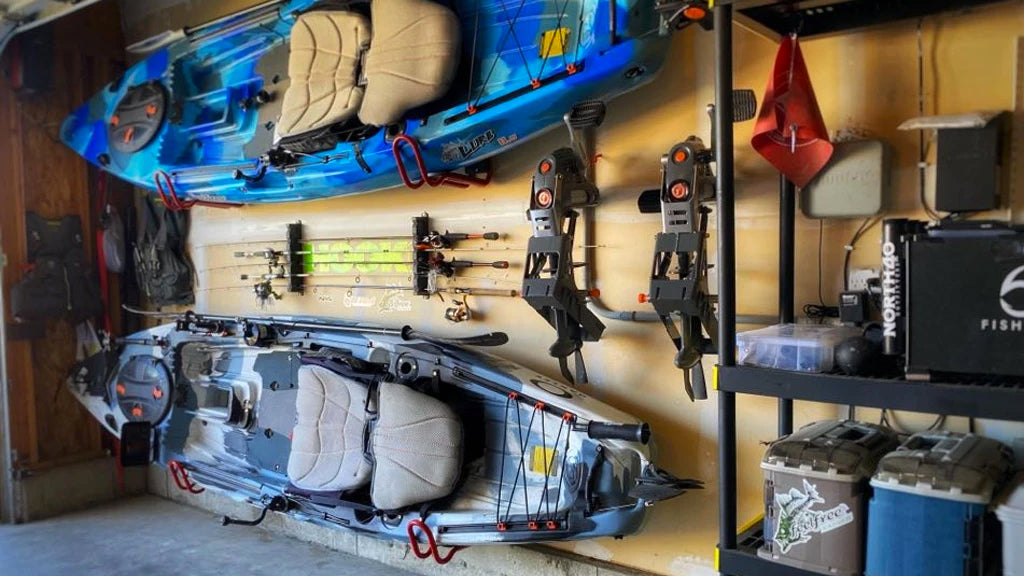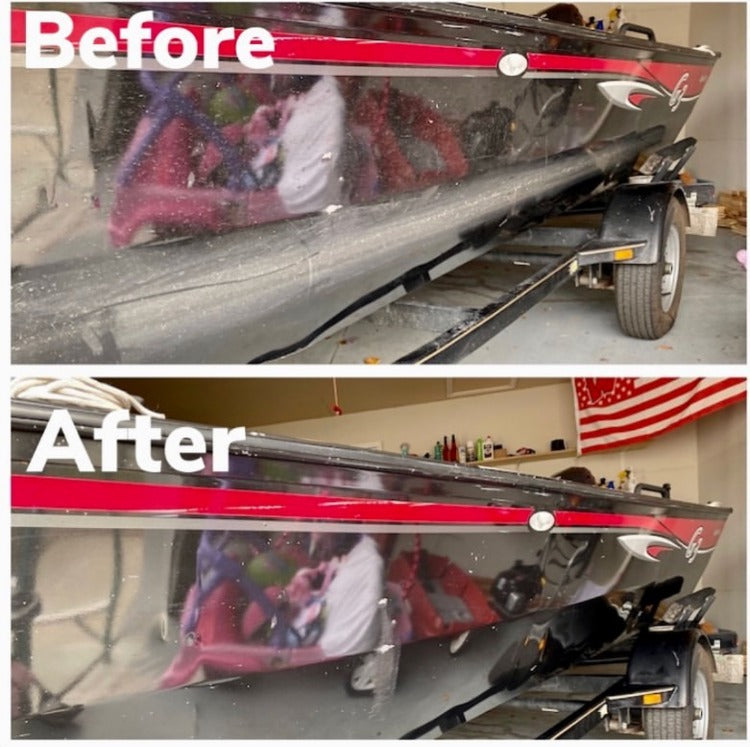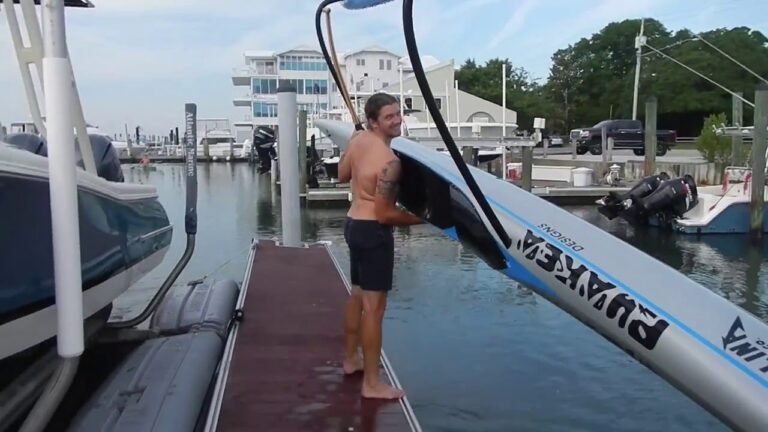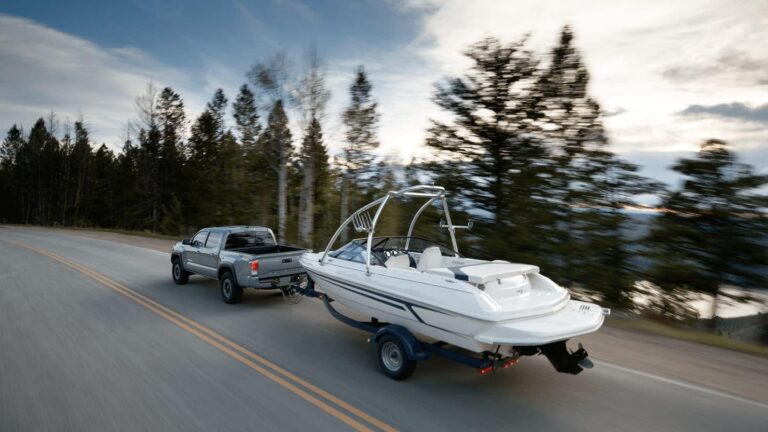How to Store a Kayak in a Garage

Store a kayak in a garage by hanging it from the ceiling or mounting it on the wall to maximize space. Ensure your storage method supports the kayak’s weight and length without deforming its hull.
Storing a kayak properly in a garage is essential to maintain its condition and prolong its lifespan. Your kayak is not just a vessel for aquatic adventures, but an investment that requires proper care. With limited garage space, utilizing vertical zones becomes a savvy storage solution.
Whether you are an occasional paddler or a seasoned kayaker, organizing your equipment effectively can save time and prevent damage. This introduction sets the stage for enthusiasts looking to optimize their storage while keeping their kayaks safe and easily accessible. By choosing the right storage method, you keep your garage orderly and your kayak ready for the next excursion.
Choosing The Right Spot For Your Kayak
Choosing the right spot for a kayak in a garage depends on specific needs. Consider size and layout constraints first. Measure both your kayak and the available space. Your garage should offer enough room to store the kayak without bending or warping it.
Think about accessibility and convenience. Place the kayak near the garage door to make it easy to take out. Ascertain that nothing blocks the path when you move the kayak. Keeping it near the door also helps to avoid moving other items around. Furthemore, the storage spot should allow for secure placement, preventing the kayak from falling or getting damaged.

Credit: www.feelfreeus.com
Preparation Steps Before Storing
Begin by thoroughly washing your kayak to remove dirt, sand, and debris. Use mild soap and water and a soft brush or sponge.
Rinse it well and ensure it’s completely dry to prevent mold and mildew.
Next, conduct a detailed inspection of the entire vessel.
Look for any signs of wear or damage, such as cracks or dents.
Take note of the areas that need repair or special attention.
Fix these issues before storing to maintain your kayak’s condition.
Vertical Vs Horizontal Storage
Storing a kayak vertically conserves valuable garage space. It keeps kayaks off the floor, preventing potential damage. Wall mounts or brackets are necessary. They ensure the kayak stays in place. Vertical storage makes the kayak visible, deterring potential theft.
| Vertical Storage | Pros | Cons |
|---|---|---|
| Space-Saving | Saves floor space | May require tall ceilings |
| Accessibility | Easy to set up and remove | Risk of tipping over |
| Durability | Reduces hull deformations | Wall damage possible |
Horizontal storage solutions support the kayak’s weight evenly. This prevents warping. Kayaks rest on their side or flat surfaces. Straps or racks distribute the weight. Yet, this method consumes more room. The kayak is also more exposed to items falling onto it.
| Horizontal Storage | Pros | Cons |
|---|---|---|
| Weight Distribution | Even weight support | Takes more space |
| Convenience | Easy to load and unload | Susceptible to falling objects |
| Protective | Prevents deformation | Can be obstructive |

Credit: www.bobvila.com
Mounts And Racks: Maximizing Garage Space
Storing a kayak in a garage requires clever use of space. Utilizing mounts and racks can maximize storage and keep kayaks safe. The types of mounts and racks include wall mounts, ceiling hoists, and free-standing racks. Wall mounts are great for side storage, while ceiling hoists use overhead space efficiently. Free-standing racks can hold multiple kayaks and are good for large garages.
For successful installation, find the garage’s studs to secure mounts. Ensure there is enough room to move around once the kayak is stored. Always follow the manufacturer’s instructions for the best results. Protect your kayak with padding on the contact points.
Protecting Your Kayak From Damage
To shield your kayak in the garage, use a proper cover. This will block harmful UV rays and reduce fading and material degradation. Select a cover that fits snugly for optimal protection.
Prevent pressure points by not placing heavy objects on the kayak. Use padded racks or suspensions systems. By evenly distributing the weight, you avoid denting and warping the hull. A stress-free kayak means a longer life for your watercraft.
| Storage Type | Benefits |
|---|---|
| Rack System | Even weight distribution, Easy access |
| Cradles | Conform to hull, Prevent deformities |
| Hanging Straps | Reduce floor space, Avoid pressure |
- Avoid direct sunlight exposure.
- Choose breathable covers to reduce moisture.
- Never stack kayaks without cushioning in-between.

Credit: m.youtube.com
Maintenance During Storage
Storing a kayak requires attention and care. Conduct regular checks to ensure your kayak stays in top shape. Look for any wear and tear. It is vital to keep the kayak dry and out of direct sunlight.
A clean kayak guarantees long-term preservation. Always clean off dirt and debris before storing. Use a kayak cover for extra protection. Keep critters out by sealing openings. Lubricate any metal parts to prevent rust. Your garage should be cool and dry.
| Storage Practice | Frequency |
|---|---|
| Inspect for Damage | Monthly |
| Clean Kayak | Before and after storage |
| Lubricate Metal Parts | Every 3-6 months |
| Check for Pests | Regularly |
Frequently Asked Questions For How To Store A Kayak In A Garage
Is It Ok To Store Kayaks In Garage?
Yes, storing kayaks in a garage is acceptable if you keep them off the ground, away from direct sunlight, and in a cool, dry place to prevent damage. Use racks or hanging systems to maximize space and protect the kayak’s shape.
Is It Better To Store A Kayak Vertically Or Horizontally?
Storing a kayak horizontally on its side is best to prevent warping. Ensure it’s supported along its length with padded racks for optimal protection.
What Is The Easiest Way To Store Kayaks?
The easiest way to store kayaks is by using wall-mounted racks or hoists. Ensure they’re in a cool, dry area to prevent damage.
How Do You Store A Kayak In A Garage Ceiling?
To store a kayak on a garage ceiling, use secure hooks and sturdy straps. Mount the hooks into ceiling joists. Hang the straps from the hooks and carefully place the kayak into the straps, ensuring even weight distribution. Keep the kayak hull side up to avoid deformation.
Conclusion
Storing your kayak properly extends its life and saves space. Use wall racks, hoists, or stands, and keep weight evenly distributed. Cover it to prevent dust build-up. Frequent paddlers appreciate the quick access; seasonal kayakers value the preservation. Protect your investment and enjoy many water adventures by tidying up smartly.





